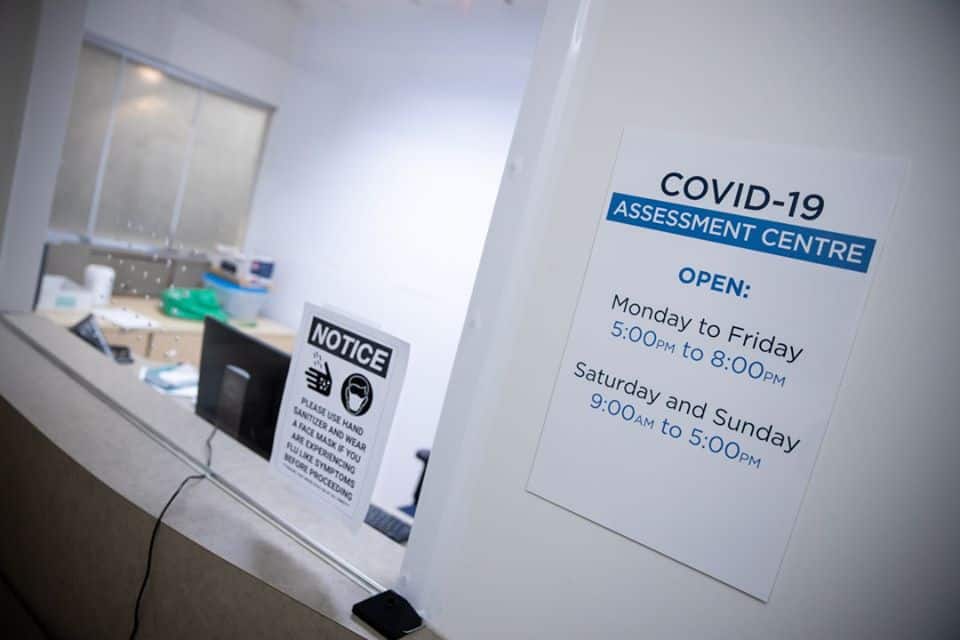Hamilton’s hospitals brace for lengthy battle against COVID-19
Published March 19, 2020 at 4:31 pm

Hamilton’s hospitals are preparing for the long haul in their battle against the pernicious COVID-19 that has, so far, infected at least 20 members of the local community.
Hamilton’s hospitals are preparing for the long haul in their battle against the pernicious COVID-19 that has, so far, infected at least 20 members of the local community.
Public Health and Hamilton Health Sciences (HHS) and St. Joseph’s Healthcare Hamilton (SJHH) officials held a virtual media conference Thursday (March 19) to provide updates on their response to the outbreak and their efforts to contain its spread.
Two of Hamilton’s COVID-19 cases are currently hospitalized. Both were admitted earlier this week, Dr. David Russell, interim Chief of Staff at St. Joseph’s Healthcare Hamilton, told media.
The one patient is the confirmed case from Heritage Green Nursing Home in Stoney Creek and the other is a woman in her 60s who returned from a cruise last Friday.
“Both have improved significantly [since being admitted],” Russell said.
Strict screening measures are in place at all area hospitals as well as rigid visitor guidelines which limit access to patients currently being treated in hospital.
Visitors under the age of 18 are not permitted in inpatient areas except under special circumstances and all visitor lounges have been closed.
Patients are allowed only one visitor at a time and one visitor must leave the hospital before another visitor can come.
Exceptions to the current policies will be made in situations involving trauma, end of life or a major surgical procedure, HHS says on their website.
In addition to strict visitation procedures, hospital staff who have travelled are being asked to self-isolate up return. Though there is a chance, if the situation in hospitals intensifies, they could be called in to help but only when employing rigid protective measures.
Melissa Farrell, the President of SJHH, said Hamilton’s hospitals “are doing everything we can” to protect staff, patients and visitors.
“Limiting face-to-face contact…limiting access to loved ones [is necessary],” she said.
The goal, Farrell said, is to prevent our hospitals and the health-care system in general from becoming overburdened in the weeks and months to come.
“It’s anything but usual at our hospitals,” said HHS president and CEO, Rob MacIsaac. “All of us have to adjust to this new reality and we’re asking for the public’s understanding.”
MacIsaac acknowledged that a number of services and clinics have been cancelled in an effort to keep people out of hospitals and to redeploy staff and resources to other areas.
Dr. Zain Chagla, an infectious diseases physician and Co-medical Director of Infection Control at SJHH said these unprecedented measures will go a long way to flattening the curve but we need to remain vigilant.
“We don’t know if there will be a vaccine,” he said. “We don’t know what will happen in the next few weeks.
“This is more of a marathon than a short course.”
Dr. Michael Stacey, executive vice-president and academic and chief medical executive at HHS, agreed in the mandatory nature of strict measures.
“We need to act now to give ourselves the best chance to avoid a disaster,” he said.
While measures might seem extreme now, Stacey and his colleagues at the media conference cautioned that there could be a deepening of measures in the weeks and months to come.
“[There’s a chance] of elongating this flattening of the curve,” said Dr. Bart Harvey, Hamilton’s Associate Medical Officer of Health. “We need to be prepared for the long run.”
Photo courtesy Hamilton Health Sciences’ Facebook page
insauga's Editorial Standards and Policies advertising





